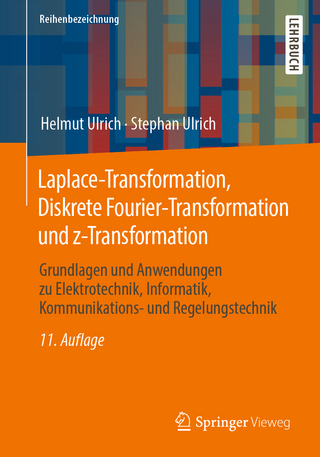
Foundations of Computational Linguistics
Springer Berlin (Verlag)
978-3-642-07626-8 (ISBN)
- Titel erscheint in neuer Auflage
- Artikel merken
The central task of a future-oriented computational linguistics is the development of cognitive machines which humans can freely talk with in their respective natural language. In the long run, this task will ensure the development of a functional theory of language, an objective method of verification,and a wide range of practical applications.Natural communication requires not only verbal processing, but also non-verbal perception and action. Therefore the content of this textbook is organized as a theory of language for the construction of talking robots. The main topic is the mechanism of natural language communication in both the speaker and the hearer. The book contains more than 700 exercises for reviewing key ideas and important problems.In the 2nd edition, Chapters 22-24 have been completely rewritten. They present a declarative outline for programming the semantic and pragmatic interpretation of natural language communication. The central task of a future-oriented computational linguistics is the development of cognitive machines which humans can freely talk with in their respective natural language. In the long run, this task will ensure the development of a functional theory of language, an objective method of verification, and a wide range of practical applications.Natural communication requires not only verbal processing, but also non-verbal perception and action. Therefore the content of this textbook is organized as a theory of language for the construction of talking robots. The main topic is the mechanism of natural language communication in both the speaker and the hearer.The content is divided into four parts: Theory of Language, Theory of Grammar, Morphology and Syntax, Semantics and Pragmatics. The book contains more than 700 exercises for reviewing key ideas and important problems.In the Second Edition, changes are most noticeable in Chapters 22-24, which have been completely rewritten. They present a declarative outline for programming the semantic and pragmatic interpretation of natural language communication. The presentation is now simpler and more comprehensive. It is defined as a formal fragment and includes a new control structure, an analysis of spatio-temporal infer-encing, and an analysis of internal matching based on the notion of a task analysis. Examples and explanations which were contained in the old versions of Chapters 22-24 have been moved to the new Appendix. A schematic summary and a conclusion have been added as well.
In the 2nd edition, chapters 22-24 have been completely rewritten. They present a declarative outline for programming the semantic and pragmatic interpretation of natural language communication. The presentation is now simpler and more comprehensive. Examples and explanations have been moved from chapters 22-24 to the new Appendix. A schematic summary and a conclusion have been added as well.
I. Theory of Language: 1. Computational language analysis. 2. Technology and grammar. 3. Cognitive foundations of semantics. 4. Language communication. 5. Using language signs on suitable contexts. 6. Structure and functioning of signs.-
II. Theory of Grammar: 7. Generative grammar. 8. Language hierarchies and complexity. 9. Basic notions of parsing. 10. Left-associative grammar (LAG). 11. Hierarchy of LA-grammar. 12. LA- and PS-hierarchies in comparison.-
III. Morphology and Syntax: 13. Words and morphemes. 14. Word form recognition in LA-Morph. 15. Corpus analysis. 16. Basic concepts of syntax. 17. LA-syntax for English. 18. LA-syntax for German.-
IV. Semantics and Pragmatics: 19. Three system types of semantics. 20. Truth, meaning, and ontology. 21. Absolute and contingent propositions. 22. Database semantics. 23. Structure and functions of a SLIM machine. 24. A formal fragment of natural language.-
Schematic summary.-
Conclusion.-
Appendix A-C.-
Bibliography.-
Index.
| Sprache | englisch |
|---|---|
| Maße | 193 x 242 mm |
| Einbandart | Paperback |
| Themenwelt | Mathematik / Informatik ► Informatik |
| Schlagworte | Complexity • Computational Linguistics • Database Semantics • human-computer communication • left-associative grammar (LAG) • parsing • time-linear navigation • word bank |
| ISBN-10 | 3-642-07626-2 / 3642076262 |
| ISBN-13 | 978-3-642-07626-8 / 9783642076268 |
| Zustand | Neuware |
| Haben Sie eine Frage zum Produkt? |
aus dem Bereich



